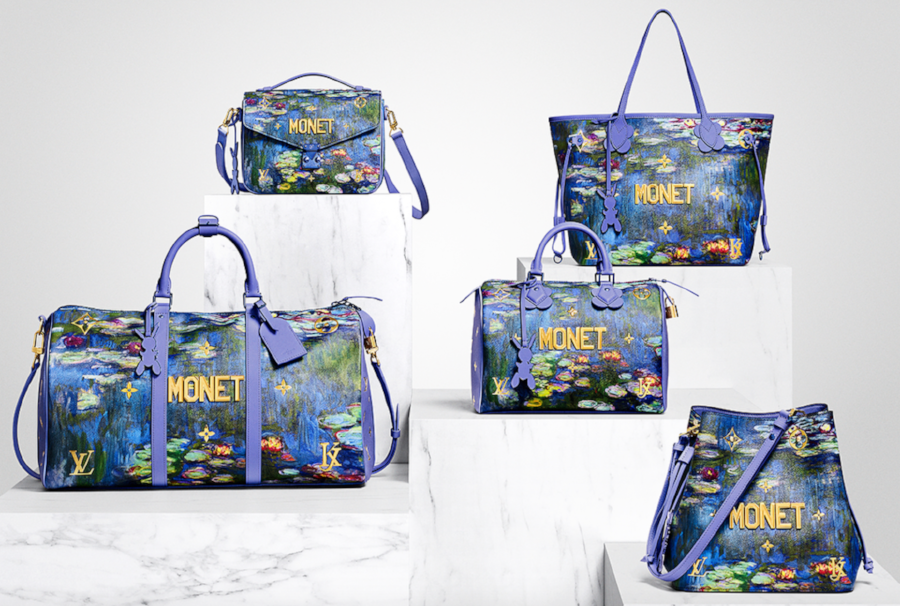
image: Louis Vuitton
The most heavily counterfeited brand in South Korea? Louis Vuitton, of course. According to the Korea Customs Service, which recently released data detailing the state of intellectual property infringement in the nation, Korean officials seized more counterfeit Louis Vuitton products than those from any other brand between 2012 to 2016. And the frequency with which fake Louis Vuitton bags are being seized by customs officials is growing.
During this time, the Korea Customs Service – the government agency that oversees all import clearance procedures for the country – says that it uncovered a total of 1,603 cases violating intellectual property rights of various brand, adding up to 2.82 trillion won ($2.49 billion).
The report, which was released by Rep. Park Myung-jae of the main opposition Liberty Korea Party, states that between 2012 and 2016, the Korea Customs Service recorded counterfeit Louis Vuitton products that would be worth 208 billion won ($183.26 million) had they been authentic and sold at retail. This was followed by 195.1 billion won ($171.89 million) worth of counterfeit Rolex watches, 146.7 billion won ($129.25 million) in counterfeit Cartier jewelry, and 144.6 billion won (US$127.4 million) worth of counterfeit Chanel garments and accessories.
Burberry and Gucci followed behind Chanel, with 92.4 billion won ($81.6 million) and 74.8 billion won ($66.1 million) in counterfeit products reported.
As for Louis Vuitton, in particular, the report reveals that the number of seized products has steadily been growing over the years. Between 2015 and 2016, alone, the total value of Louis Vuitton imitations grew by 33.6 billion won ($30 million), totaling 43.9 billion won ($38.8) last year, despite the fact that high end shoppers have largely taken to shunning the Paris-based brand because it’s logo-covered bags are being deemed “too commonplace.”
According to the Seoul-based Korea Times, “In Korea, consumers have dubbed Louis Vuitton bags ‘three-second-bags,’ saying they are seen in the street every three seconds. From the perspective of critics, the brand is too common to be cool.” With this ind mind, the brand’s “sales growth has fallen at major department stores in Korea over the past few years. Its sales even contracted at one department store last year, while rivals Hermès and Chanel chalked up double-digit growth at the same store.”
Such a movement away from excessively logo-covered products in Korea – likely the result of aggressive expansion in the Far East by big Western luxury brands and a sense of logo fatigue amongst consumers as a result – mirrors the current trend in China, where many luxury consumers are shunning ostentatious logos in favor of less conspicuous, and in some cases, more “niche” brands, including some locally-made ones.
China: The Counterfeit Capital
Rep. Park Myung-jae’s report confirms that over 90 percent of the counterfeit goods were imported into South Korea from China. Specifically, of the 1,603 cases uncovered, which have been valued at 2.82 trillion won ($2.49 billion), a total of 1,342 cases worth 2.55 trillion won ($2.24 billion) have been directly tied to China, which is both the world’s second-largest luxury market and the primary source of all counterfeit goods in the world.
Of the counterfeit goods that were not imported from China, 108 instances, amounting to 190.9 billion won ($168.19 million), came from Hong Kong, and 44 different cases – and with 33.6 billion won ($29.6 million) worth of counterfeit goods – centered on goods originating from Japan.
By item, watches and bags were the most highly copied items. While the total value of fake watches fell to 35.2 billion won last year from 304.3 billion won in 2012, the number and value of counterfeit bags that were confiscated by Korean authorities grew to 110.4 billion won in 2016, up from 37.6 billion won in 2012.







